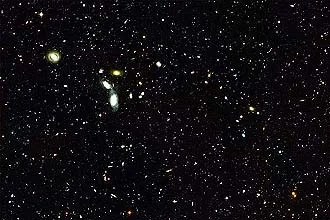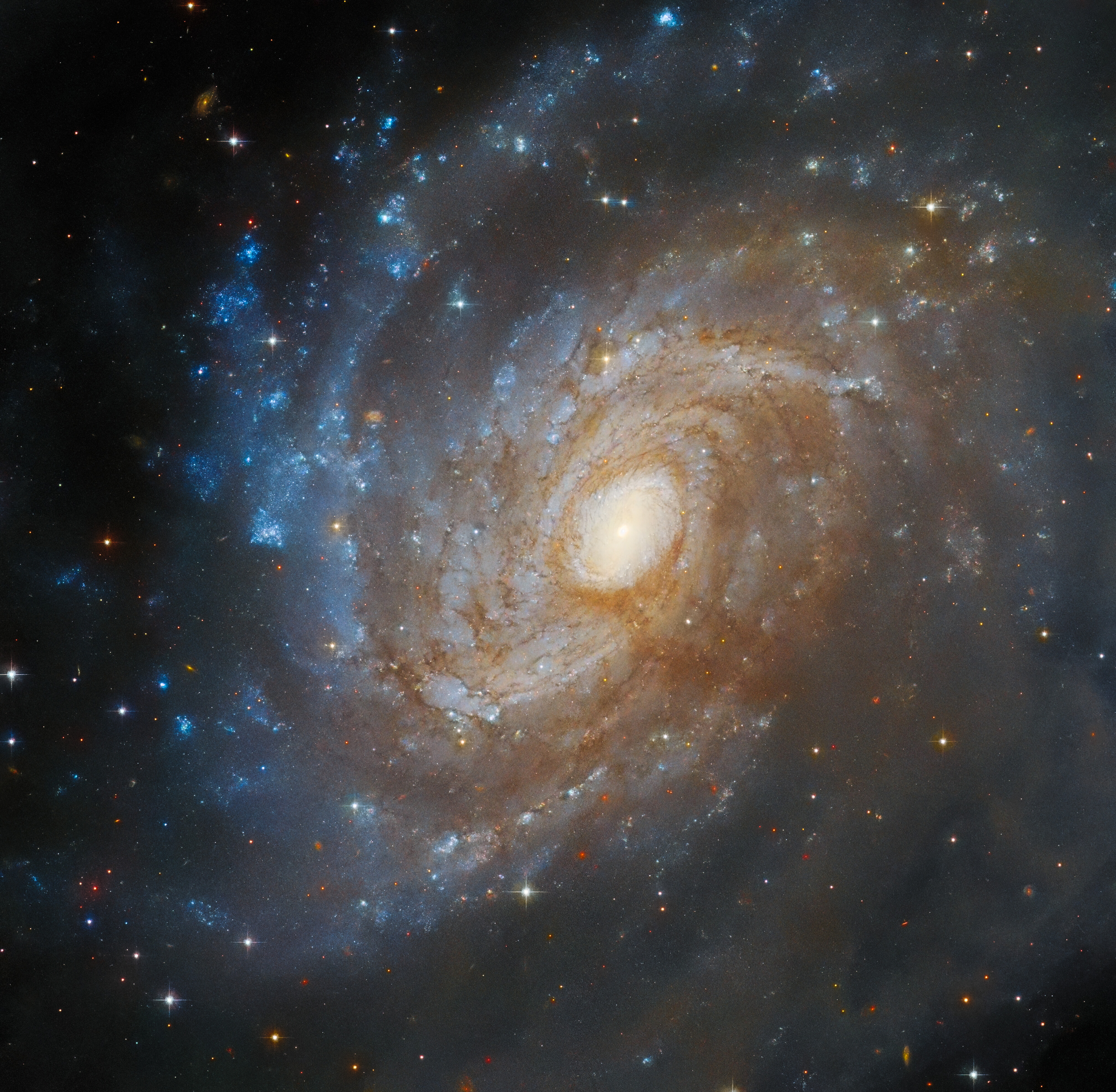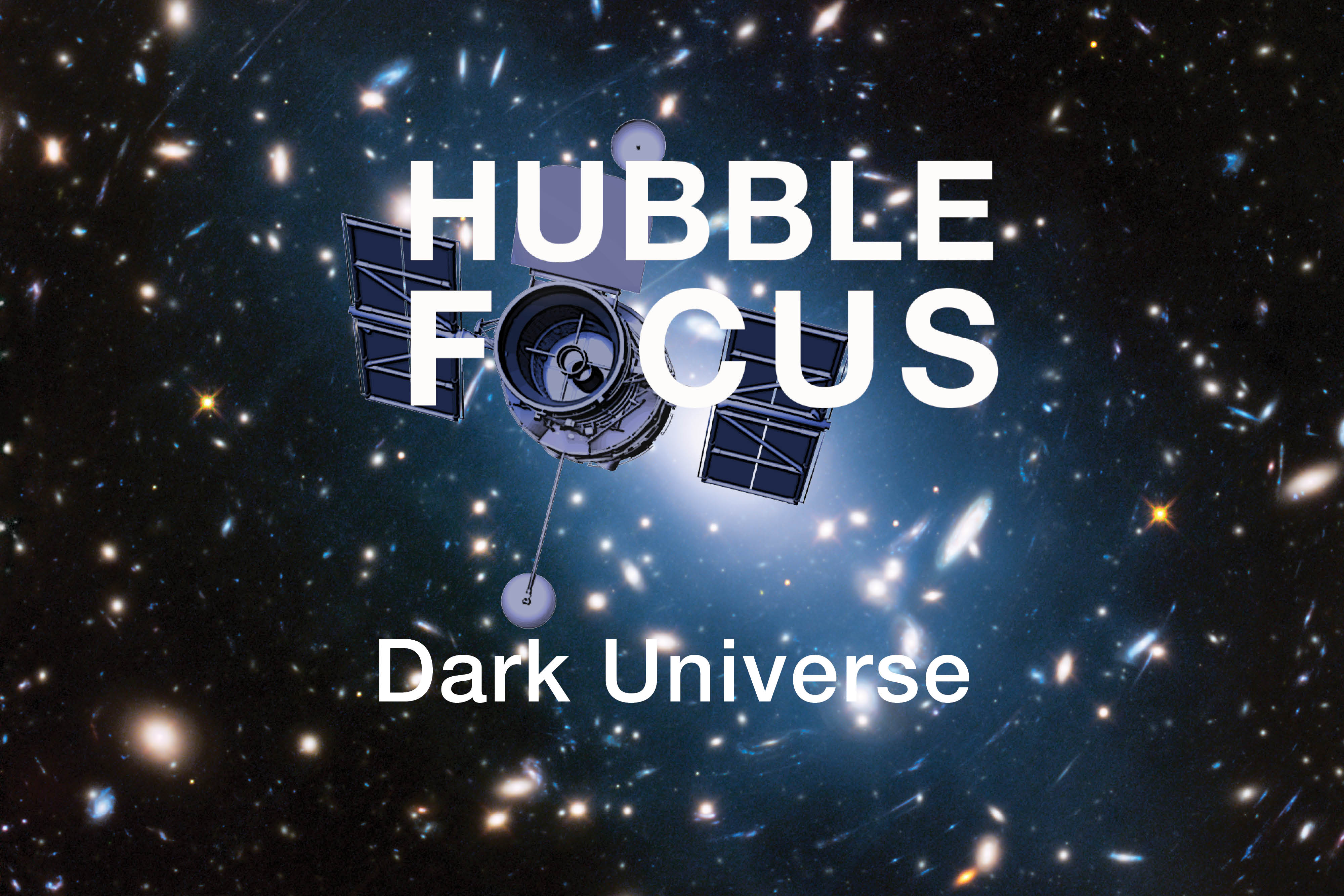3 min read

In one of its most memorable observations, NASA's Hubble Space Telescopegazed into a "keyhole" piece of sky and didn't blink for 10 days. Thetelescope's unwavering "eyes" uncovered a galactic gold mine: abewildering assortment of galaxies stretching back billions ofyears. Astronomers dubbed the area the Hubble Deep Field.
How could Hubble top the landmark Hubble Deep Field observations? Howabout by viewing a piece of the sky equal to 60 Hubble Deep Fields? Thetelescope's powerful Advanced Camera for Surveys did just that, samplinggalaxies in an area over one-third the size of the full moon. Thegalactic census is called the Great Observatories Origins Deep Survey(GOODS), the most ambitious study of the early universe yet undertakenwith the Hubble telescope.
Hubble is one of three "great observatories" involved in this survey.The other two are the Chandra X-ray Observatory and the Space TelescopeInfrared Facility (SIRTF), which will be launched in August 2003.Astronomers are using Chandra to search the GOODS fields for theearliest black holes in the universe. SIRTF will hunt for more stars.
The GOODS survey targeted two seemingly empty spots in the sky -- one inthe northern sky, the other in the southern sky. But Hubble proved thatthese small scraps of sky are teeming with galactic life. The telescopediscovered roughly 50,000 galaxies in both regions combined. Astronomershave identified more than 2,000 of them as infant galaxies, observedwhen the cosmos was less than about 2 billion years old. With theseHubble snapshots, astronomers are creating a scrapbook of galaxyevolution from infancy to adulthood.
The myriad galaxies in the Hubble Deep Field represented the first bigstep for Hubble astronomers to understand galaxy evolution. But studyinggalaxy evolution in the Hubble Deep Field is like trying to understandthe population of a country by sampling a small village. Astronomersdon't know if the galaxies in that village are representative of theuniverse's galactic population. The GOODS survey, on the other hand, isakin to sampling the population of a large city to make inferences aboutgalaxies in the cosmos.
In preliminary results, Hubble astronomers report that the sizes ofgalaxies clearly increase continuously from when the universe was about1 billion to 6 billion years old. (Many astronomers believe that theuniverse is about 13.7 billion years old.) GOODS astronomers also findthat the star-birth rate rose slightly between the time the universe wasabout 1 billion and 1.5 billion years old, and remained high until about7 billion years ago, when it quickly dropped. This is further evidencethat major galaxy building trailed off when the universe was about halfits current age.
The growth of black holes in galaxies is part of the galaxy evolutionscrapbook. For the GOODS survey, astronomers used the X-ray "eyes" ofChandra to hunt for these mysterious objects. One of the fascinatingfindings in this "deepest" X-ray image ever taken is the discovery ofseven mysterious black holes that do not correspond to the galaxies seenin the Hubble image. Astronomers suspect that these objects are the mostdistant black holes ever detected. An alternative theory is that thegalaxies in which they reside cannot be seen because they are heavilyenshrouded in dust.
When comparing the Hubble and Chandra fields, astronomers also foundthat active black holes in distant, relatively small galaxies were morerare than expected. This may be due to the effects of early generationsof massive stars that exploded as supernovas, evacuating galactic gasand thus reducing the supply of gas needed to feed a supermassive blackhole.







